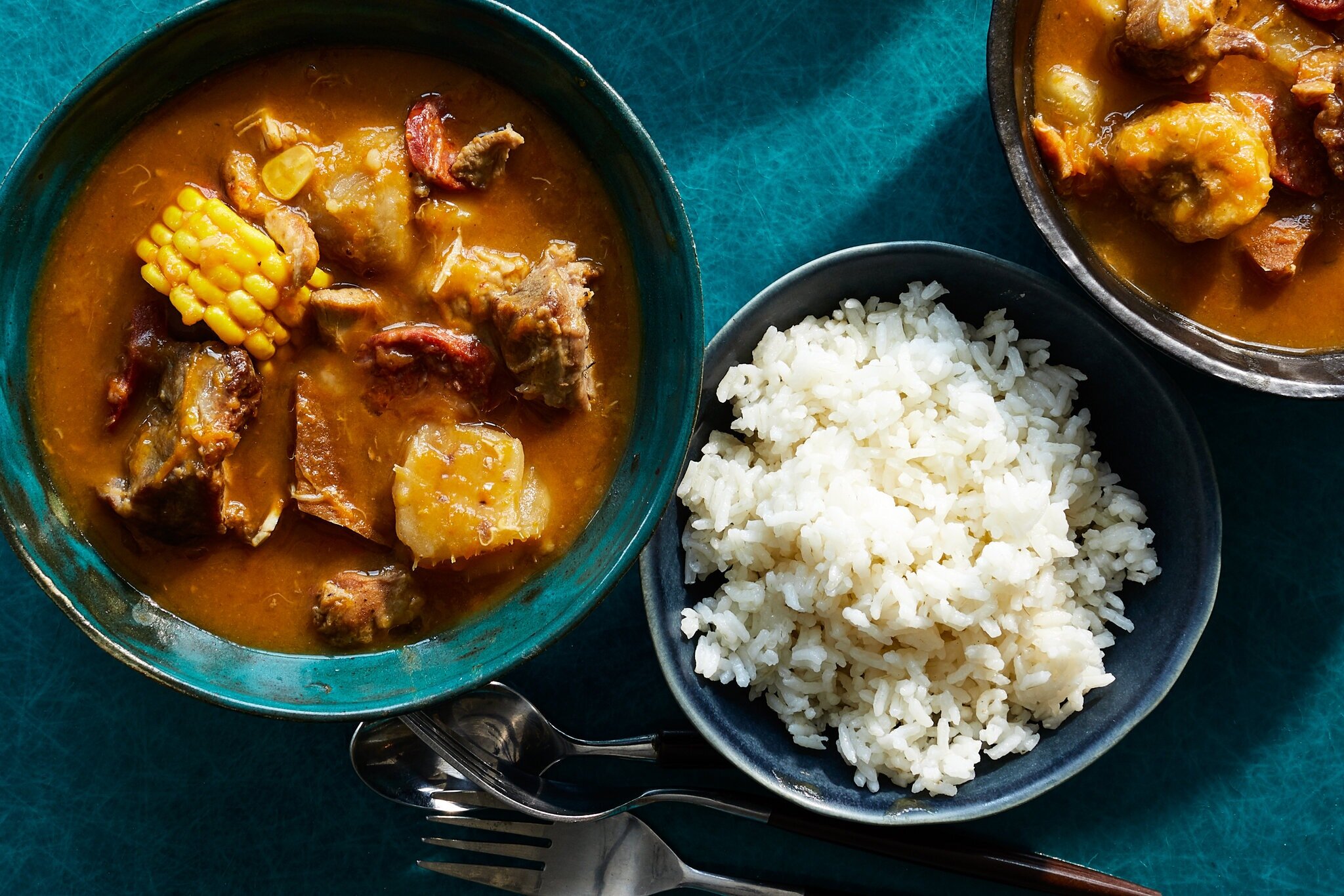recipes
Cook With Von



Yuca con mojo
“Yuca is among the most commonly eaten viandas — the local word for starchy fruits and vegetables, such as plantain and taro — in Puerto Rico. It is the root of the cassava, an extraordinarily resilient plant that was the principal food of the Indigenous Taínos of the island. Among its many preparations, this is my favorite: boiled yuca doused in a garlicky citrus mojo dressing, my grandmother’s recipe. She never wrote it down, but my mother had it deep in her memory, and we cooked it together for this version you see here. The mojo will keep for several weeks in the fridge, and is also delicious on crispy fried tostones, roasted vegetables and fish.



























